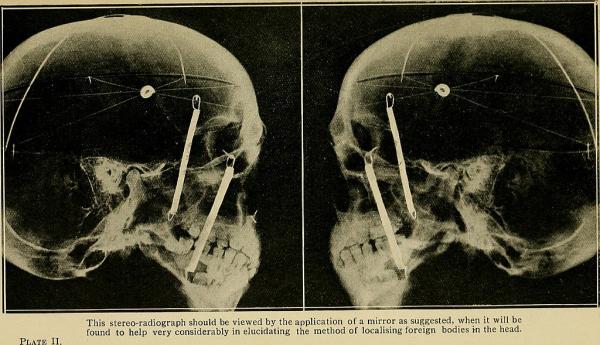The case of a 13-year old boy whose skull was pierced by a 6-inch screw in a treehouse-building incident just hit the news. According to his neurosurgeon, Dr. Alan Cohen, at Johns Hopkins Hospital, "He was a millimeter away from having himself bleed to death." So, the fact he is already home after emergent airlifting and brain surgery for an almost “catastrophic” event is quite miraculous.
Though it seems like a movie plot, accidents like this assume a significant role in our healthcare delivery burden. As per the Centers for Disease Control and Prevention (CDC), unintentional injury is responsible for 30.6 million visits to emergency rooms. This does not reflect those who also seek ambulatory care services. Unintentional injuries are the 4th leading cause of death in the U.S., totaling 135,928 per year with the majority being from falls (see here), motor vehicle/traffic accidents, or poisonings.
As I touched upon in my article We Are Killing Ourselves, The National Safety Council even publishes an “Odds of Dying Chart” that affirms we are more likely in our lifetime to be killed by everyday activities - and they would like to prevent that, which is why they list a probability of events. There is a 1 in 144 chance of dying from a fall compared to 1 in 6780 from severe thunderstorm, and a 1 in 470 chance of dying in a car as opposed to 1 in 164,968 chance of a lightning strike. With 22 people likely to be killed by a cow this year, on average, that's 500 percent more than will die by sharks.
When it comes to long-term disability or death from such misfortunes, those in gravest peril experience a mechanism of injury whose greatest toll is on premium real estate. Location. Location. Location. Where in the body? What organs are affected? Which blood supply?
As the chief of pediatric neurosurgery stated, one more millimeter and the outcome in this example might have been devastating. With the brain, its vital structures and vasculature, there is very limited room for error.
A little luck is always welcomed.
How a person is managed at the scene and properly transferred for emergent care contributes to the degree of expansion of damage. Avoiding secondary injury beyond the original mishap is essential to increasing chances for survival. Movement of an impaled projectile or its premature removal when unaware of the extent of injuries can in certain scenarios permit excessive blood loss or escalate the problem. For example, if a damaged critical vessel is being compressed by the foreign body itself, then maintaining this state until proper assessment and subsequent informed intervention can be done safely can make all the difference in the world.
Usually, discerning this requires imaging modalities only available in a hospital where treatment can be performed in a more controlled setting by multi-disciplinary teams. Preventions for infection can be implemented and proactive monitoring of compromised body systems can avert intensification of losses.
Here’s a starter list of things that can set you on a path to avoiding unnecessary injury (with some blue links to more detailed articles on the subject):
-
Observe traffic laws
-
wear seat belt
-
follow speed limit
-
avoid cell phone usage/texting while driving
-
Don’t drive tired
-
Avoid driving under the influence of alcohol or drugs, or riding with an impaired driver (see here for more on drugged driving)
-
-
Maintain your home environment
-
wipe spills
-
tuck away prominent cords
-
install hand-rails, bath mats
-
fix or remove problems
-
check carbon monoxide detectors & fire alarms
-
-
Only use your own prescription medications as prescribed by your physician
-
See Serious Medication Mistakes Happening At Home—The Why Depends On The Who
-
See here about risks of polypharmacy
-
-
Safety gear use in sports and recreational activities (i.e. helmets)
-
Follow safety rules in the workplace (read here)
-
Know the residents of your home
-
Learn to swim
-
Be careful with ladders, power tools and chemicals
-
Recognize the hazards of intentional ingestion of toxic materials for fun or sport
-
Read here for ill effects of competitive eating of extremely hot peppers
-
Read here about the dangers of the so-called “Tide Pod Challenge”
-




